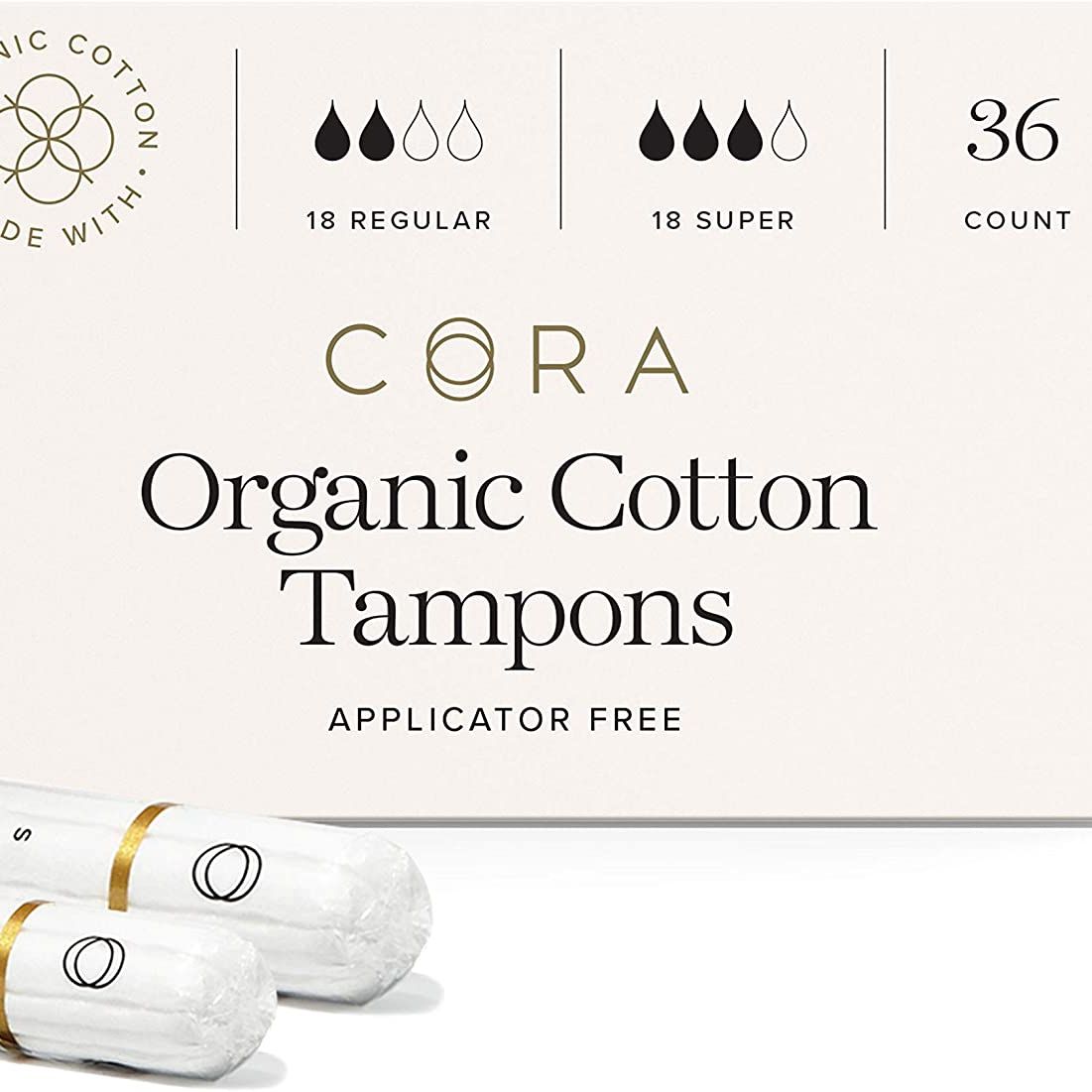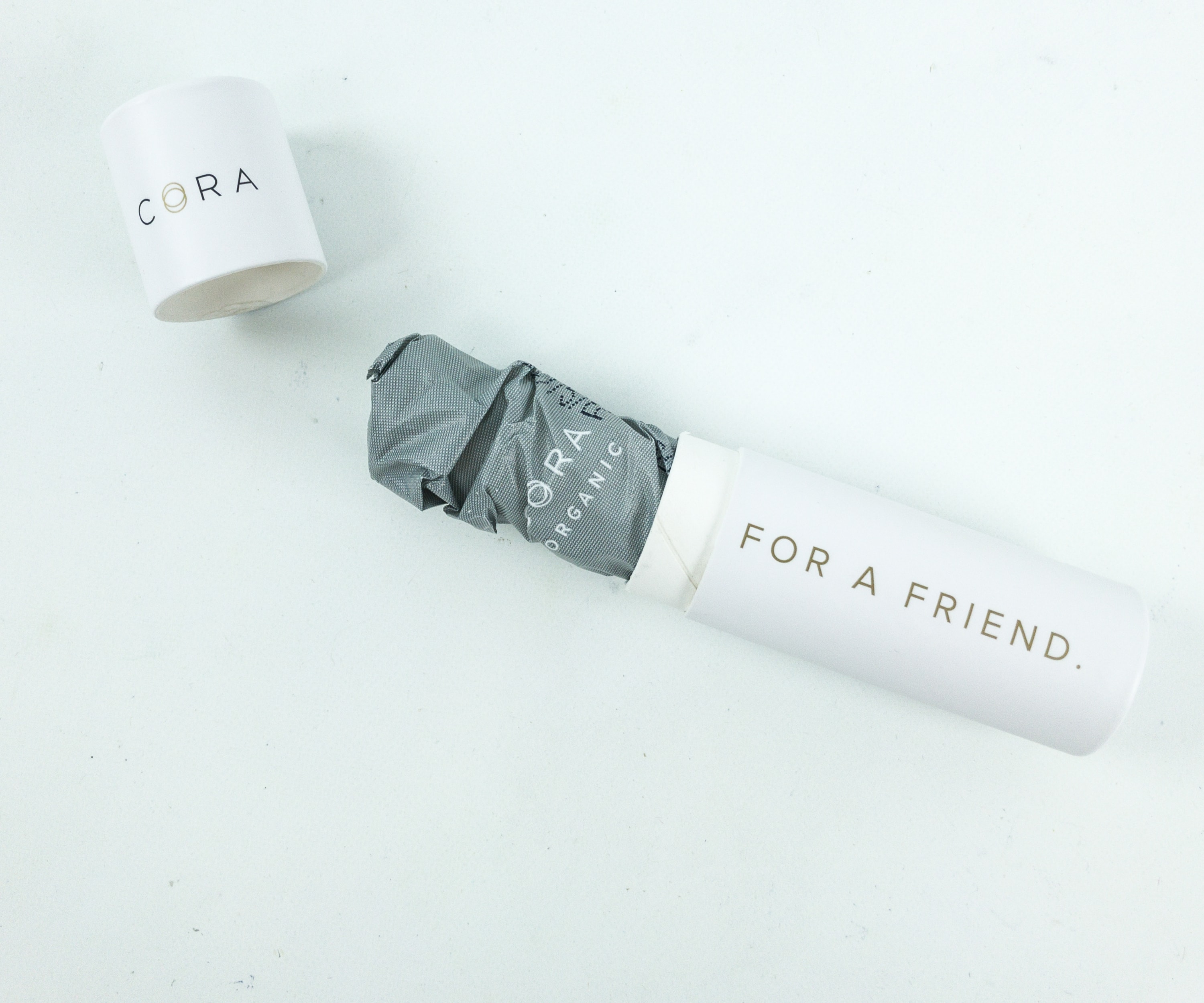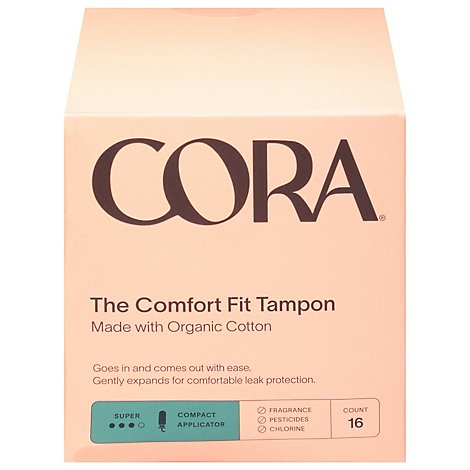Cora Tampons Review

We are here:
Coravs Rael, Best Organic Tampons: Reviewed Coravs Rael This article offers referral links. These link will earn us an extra commission. Some links will also offer our readers special discounts.
Tampons aren’t a product that we tend to give much thought to. They’re just meant to ‘do the job’ once a month and be forgotten about.
The truth is that this has been true up until quite recently.
This article will explain why organic tampons are a better choice than traditional ones and how they have gained so much popularity.
Rael Cora, one of the most respected organic tampon companies in the world, will be our focus.
For my own research and testing, I chose the top one.
You might be interested in organic tampons. This guide may help you to make the right choice.

Lola and Cora Organic Tampon Subscribers Are Astonishingly Popular Which Is The Best?
Below is a list of the two most popular brands for menstruation you can find on Instagram. We also discuss whether or not they are worthwhile.
Credit: Reviewed / Betsey Goldwasser Sara Hendricks Recommendations are independently chosen by Reviewed’s editors. Reviewed may make a commission from any purchase made via our links.
Reviewed is just as interested in the flashy products that we are seeing on our Instagram feeds. Our writers tested them to see if they are as great as the images online. Spot one that we’ve missed? Email us at [email protected] Today, periods are a big business. There were once a few well-known menstrual brands like Kotex, Playtex and Always. They could be found in the back of the drugstore, along with an incomprehensible blue liquid that was meant to signify menstrual fluid. People with periods now have many options beyond pads and tampons. They can also choose absorbent underwear or menstrual cups.
Another option? More tampons are available, such as organic pads that can be shipped to you through a subscription. These tampons and pads have been mainstreamed thanks to social media. You can scroll through Instagram and listen to “My Favorite Murder”, but it is hard to not think about whether your period could be improved by switching to organic.
This is how I found out. Lola Cora, a popular organic subscription-based menstrual product brand, and Lola Cora, were the brands that I selected. Then, they were tested for a couple of months.

Are Your Tampons Organic?
Credit: Reviewed By Betsey Goldwasser Organic and not, the tampon remains a normal tampon.
Lola’s website says that although other brands may not be required to list what they have in their products (though many do), and can include toxins or dyes as well as synthetic fibers. Lola tampons however are 100 percent made of organic cotton.
Cora’s web site follows the same approach. It touts its organic, pesticide free cotton that is sourced from Europe, as opposed to traditional cotton that Cora asserts has been farmed using synthetic pesticides. Both brands are certified organic by the Global Organic Textile Standard , an organization that stipulates that its certified products must be made with a minimum of 95 percent organic fibers and cannot contain heavy metals, formaldehyde, aromatic solvents, “functional nano particles,” genetically modified organisms, chlorine bleach, and more. Additionally, there are regulations that apply to certified companies for their waste management as well as their raw material sourcing. This is not the case with traditional textile manufacturers.
For me, a pesticide-free tampon is better than a dyed toxin filled one. This is not only the company’s branding, but it also shares the same goal as all other product makers: to make people buy their products. You also have to consider the fact that organic upgrades can be expensive. Are you obliged to?
This is the first problem (which isn’t due to these tampon manufacturers, although they do take advantage): Organic means “healthier” or “better for you.” However, organic refers only to how cotton is grown, processed, and made into textiles.
In order to find out more about their human health effects, I reached an objective expert. He asked me a few simple questions.
Walk In Gyn Care is a New York City-based clinic founded by Dr. Adeti. Most conventional tampons are made with a blend of rayon, cotton, and polyester, which may have been bleached with chlorine before being manufactured. Some contain scents and odor negators. “There is a thought but no clear evidence that the bleaching with chlorine may cause the release of a toxin called dioxin, which if absorbed into the bloodstream may cause cellular damage,” Gupta says. However, this theoretical risk does not mean that traditional tampons should be stopped. Gupta says to avoid scented products because they could cause problems with the vagina’s natural pH and self-cleansing abilities. You can still use normal tampon usage, such as using sealed tampons and not leaving them in the package for more than 4 hours. To reduce your risk of Toxic Shock Syndrome, a rare disease caused by bacteria overgrowth, regular changing is essential. Gupta claims that TSS occurs because of a hidden foreign body in your vagina. “It doesn’t matter what organic tampon it is.” Retained tampons cause the majority of persistent, unresolving vaginal problems. She says that once they kick in it’s very difficult to get the pH back to normal. It’s possible to make a switch to organic products, but it won’t hurt your pocketbook. Just read the ingredients and make sure the brand you pick is certified as organic to ensure you’re actually getting the all-natural promise you’re paying a premium for. You want them to work.

Cora. What’s it like to place an order?
Credit: Read the review / Betsey Goldwasser.
Cora’s ordering experience is similar to Lola’s. It asks questions that are similar to those of Lola about how your periods go and which products you prefer.
Cora ships three months in a row so Cora recommended 18 regular tampons. It comes with a plastic applicator but you also have the option to purchase an applicatorless version of 18 pads. The total cost of Cora’s 18 regular tampons is $32. To compare with Lola’s I added $6 for 18 extra liners. This brought my total up to $38. (Lola also had shipping included). With your first order, you get a sleek black storage box for your bathroom (or wherever you keep your period products) and a zippered “vegan leather” carrying case that can hold several tampons and pads on the go. I didn’t get a discount when I ordered, but the brand now offers a ” starter kit ,” which includes a month’s worth of period supplies for $5. Finally, Cora donates a percentage of the proceeds from every Cora order to organizations that assist women in need. After doing the math, I found that the average cost per tampon or per pad was 88c each and that a liner would be 33c each.
Cora orders have some customization options, however it’s less precise than Lola’s. But you can still pick the item that interests you. With Cora, you can pick from a range of pre-set varieties, like half regular and half super tampons and half regular and half overnight pads, all regular and some overnight, or some light and mostly regular. The greater the number of products that you receive per month, you can have more customisation.
Lola and Cora Subscriptions: Worth it?
Credit: Reviewed by Betsey Goldenwasser. Is there any difference between Lola tampons and Cora?
If you look at it from a financial standpoint, there is no. To give you an example, a box of 18 Tampax Pearls can be purchased at Target for $3.99 or 22 cents each. And (surprise!) you can get a box of 18 Cora tampons at the same retailer for $5.99, or 33 cents each. Amazon offers a Subscribe and Save option that allows you to order any number of brand tampons, organic or conventional, at any monthly frequency you prefer. It costs just 13 cents for each tampon, with the possibility of taking 2! Cora tampons come in at around 34 cents apiece. Cora has a double-digit price for orders placed directly through its site. Lola’s tampons retail at 55 cents each. When you consider how many times a tampon is used each period, probably between 10 and 20, but certainly not 7, as well the number of years (12) it takes to change to either one.
If it is your lifestyle or the need to help a start-up with a mission, then you might not mind paying the markup. Based on my personal experience with each brand’s tampons I prefer Lola’s to Cora’s. Ordering is much easier and costs far less. Also, I like the ability to personalize the items that come in the shipment. There’s nothing wrong with the $5 Cora Starter Pack, provided you cancel your ongoing subscription before it charges you (unless you choose to keep it).
If you favor pads, I suggest you keep with conventional brands, or make the transition to period panties if you’re interested in a more eco-friendly approach. Lola’s or Coras’s pads are my preference. Lola’s pads performed better than Cora’s. However, there was leakage, crumpling, lack of adhesive, and some other issues. Although I don’t think this will continue, both brands are great at making tampons. I assume that they’ll eventually figure out how make decent pads, but, for the moment, either brand is worth it.
What’s the bottom line? If you’re interested in stocking your menstrual supply cabinet with organic cotton, don’t want to deal with going to a drugstore every month, and favor tampons over pads, trying some Lola or Cora tampons is a great place to start.
Blog
From conspicuous consumption to conscious, you can do reviews and move on. The site has many honest reviews about Everlane. Elizabeth Suzann. Grana. Cuyana. Lola Tampons Cora Tampons was a product I tried out in an effort to minimize waste. The menstrual cup is a superior product to tampons with plastic applicators, I think. Yes, I did try. Actually I tried two, one from Luna and one from Diva Cups (both in their smallest sizes). Unfortunately for me, my bleeds are too severe and I have a narrow canal. Because of this I can not only leak but also feel the cups pressing against me (it doesn’t hurt, but it’s uncomfortable pressure). Combine that with severe cramps and it’s impossible for me to handle. Add to that, every time I removed my cup, it was messy. But I know I can do better. Lol. I’m sorry for being so naive, but this just goes to prove why menstrual cups are not something that I like. While I am all about saving the planet, I cannot give up my tampons. When I’m feeling bad from my period, I just want to be comfortable.
Playtex tampons have been my daily companion for over a year, and I don’t think about it much. Lola became my next choice after hearing about Cora Tampons. Lola Tampons were a little cheaper than Cora (0.50 per tampon) and $0.67-$0.92 for different subscriptions. They both provide the same product (organic cotton feminine items) as well as a charity arm. Lola provides feminine products for low-income women in America, and Cora gives abroad. So yes even though Lola tampons are more expensive than Playtex ones, I’m happy to pay a bit more for the organic cotton and for the donations Lola gives. But only if they are as comfortable as my Playtex ones. They are, and I am happy to say that they are.
While I love plastic applicators personally, I would consider switching to cardboard for its environmental benefits. Lola makes it easy to personalize each box according to your requirements. Light tampons don’t suit me as I’m heavy bleeding so they are unnecessary for me. However, on light days, my Thinx is what I like. I also don’t like their Super+ ones since they’re quite large and uncomfortable for me, but I do like them for the heaviest nights (since I don’t move around and won’t feel them, but during the day and moving around I find them a tad uncomfortable). My usual order includes a mixture of super, regular, as well as a few Super+. It’s great that you can edit your box and the shipping dates really easily from your account on their website.
The only negative thing I have to say about them is their shipping speed. The order went through on March 8th. It arrived the following day. Lola’s shipping times are often a bit complicated so I made sure to keep at least a month of supplies on hand.
Cora Tampons were not available online for me to order, but they could be found at Target. One box of 32 tampons (16 regular and 16 super) was selling for $10, which makes it $0.31 per tampon and cheaper than buying either Lola or Cora online. Cora offered plastic application tampons, which I used to be able compare apples to apples. And they are the exact same product guys. It makes me wonder, if organic cotton tampons are only made in a few places and that Lola and Cora get their products there. Cora says that the tampons are produced in Slovenia. Target might continue to stock Cora tampons. I may make the switch if it does.
Lola and Cora are not the best choices. You have to make the right choice for your needs and budget. But I just wanted to share my experience with these new brands. It doesn’t seem like organic cotton is any better than bleached and processed cotton. Are you a Lola/Cora user? And what were your experiences with them?
Everlane: Review of the Linen Sleeveless Dress –

Cora Tampons Review of Subscription Box
Hello Subscription researches, reviews, and evaluates subscriptions. A commission may be earned if you order through the links.
is a subscription box that brings tailored tampons according to your flow. You’ll receive a monthly subscription starting at $9.00 and a premium box of organic cotton tampons.
Sign up and take a quick quiz to find out how often you use tampons per month, whether or not you prefer all regulars, supers or a combination of both. Your subscription price depends on how many tampons you need monthly and starts at $9 . You can pay quarterly or annually for a discount.
Your first box will include a complimentary signature kit, including Cora’s Little Black Box, Little Black Clutch, and Cora’s Stowaways.
Everything is neatly packed inside the box.
This pamphlet covers everything you need to know about both the brand and its products.
Is Cora A Good Tampon Brand?
Organic, hypoallergenic, vegan, biodegradable, and compostable, these tampons from Cora are some of the best money can buy if you’re looking for high-quality organic tampons and a nifty subscription service.Oct 11, 2021
Cora Tampons – Are They Safe?
Cora Organic Cotton Tampons The brand is a veteran of over 10 years and has produced feminine care products that are 100 percent safe. Cora’s natural tampons contain hypoallergenic, organic cotton that has been GOTS-certified.
How Long Can You Keep A Cora Tampon In?
The Cora Cup is good for 12 hours. It can be worn twice per day, or as often as you like.
Are Cora Pads Safe?
Cora. Cora has been certified B Corp. This makes menstruation much easier by providing period underwear as well menstrual cups. Organic pads and tampons are also available. It’s safe and healthy because the period pads are free of chlorine, perfume, or polyester.
.Cora Tampons Review
